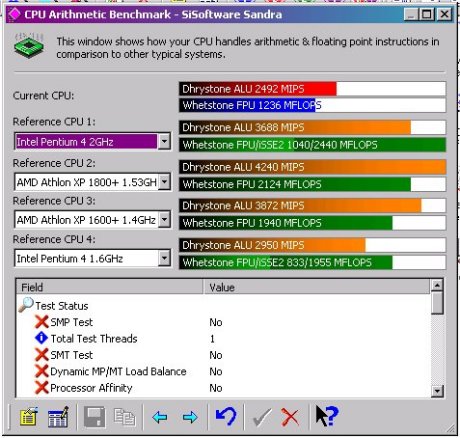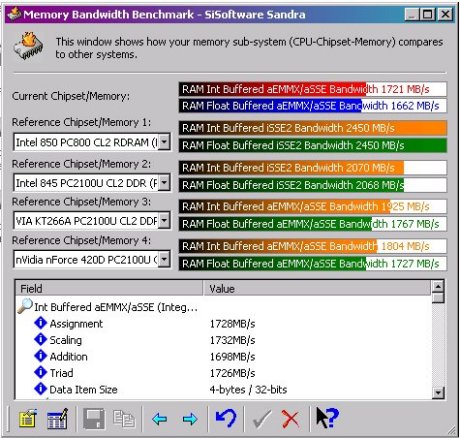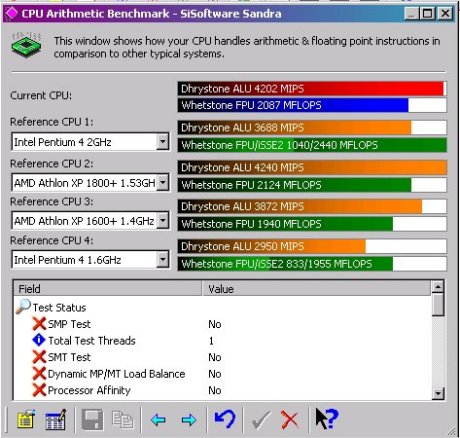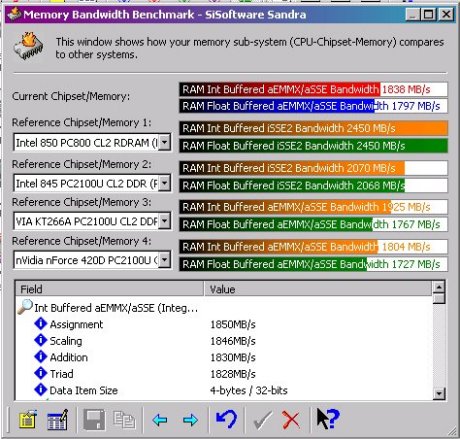|
Introduction
I wonder if someone high up at AMD has recurring alarm set in Outlook that beeps "Release a new processor this week". No sooner do we take a look at AMD's current performance pinnacle, the XP2000 than the NDA is lifted on a new processor and the whole cycle starts again.
However this time things are a little different. Sometimes I forget that AMD also competes in the supreme value segment and sometimes not everyone needs the raw power of an AthlonXP. For those people, AMD create the Duron. As you might well know, AMD introduced something it calls Quantispeed for the jump to the AthlonXP. Quantispeed is a set of core enhancements over the old Thunderbird core that make the AthlonXP faster than an equally clocked Thunderbird.
Since the Duron's 1Ghz birthday, it too has changed core from the Spitfire core to the Morgan. As you know from previous Durons, it's basically an Athlon with less cache memory, 64kb of L2 unlike 256kb on the Athlon. Both processors have 128kb of L1 (Intel's P4 only sports 8kb of L1!).
With the core change on the Athlon to the Quantispeed core, the new Durons have taken on some of the new performance characteristics of it's big brother. You'll find the new prefetch logic on the processor along with SSE and L1 TLB (Transition Lookaside Buffer) enhancements for more efficient use of the Level 1 cache memory.
Finally, the physical updates are completed by a slight increase in die size from 100mm² to 106mm² and a few more transistors (0.18 million more at 22.18M).
We saw back with our original 1Ghz Duron review featuring the new Morgan core that the processor was very similar in performance to a 1Ghz TBird due to the new enhancements. We're expecting similar performance from the new processor to a 1.3Ghz TBird so lets see if that theory holds out.
Performance
The performance enhancements in the core should balance out the cache size disadvantage the Duron has compared to a Thunderbird CPU with identical clocks and we should see the Duron perform more or less the same.
The test platform was a system indicative of the target system the processor is likely to be found in. The Abit KG7 provides the perfect value platform. It's fast, with the AMD760 DDR chipset giving it all the memory bandwidth it could ask for and it's also fairly cheap now and full of stability, exactly what the value customer is looking for. We've paired the processor with 256Mb of Crucial PC2100 DDR memory at CAS2 (CAS2.5 stock). This is a fairly standard spec that you'll see the processor in. Windows 2000 Professional was the test operating system.
We'll take a look at the usual Sandra benchmarks and also try a quick spot of overclocking too. First off, the CPU benchmarks at 13 x 100.


As we can see, performance lags behind the current cream of the crop by quite a margin. The processor simply cannot keep up with processors at the high end of the spectrum, but to compare them would be missing the point. The Duron is not a high end performance processor. It is designed to give the value user a bit of muscle while still keeping costs down. This is the beauty of the processor. It's dirt cheap but still very able to perform the huge majority of daily tasks. If we were all to be brutally honest, the Duron 1300 would probably suit a large percentage of users.
However, for those that genuinely need the extra performance of a faster processor then the Duron 1300 wont make the short list. Next up, the memory benchmark.

Nothing particularly exciting from these results, just that the processor and host chipset are working properly and that the memory controller is functioning very close to peak efficiency which is just under that of more recent DDR chipsets such at the KT266A and the TwinBank memory controller in the NVIDIA nForce chipset.
Here we can see that despite not performing in the upper eschelon of the performance arena, the Duron still holds its own and slots into the area we can nowadays mark as value performance. The processor offers up good performance for the price and you can't expect much more than that. Or can you? As always, overclocking an AMD processor is always an option and with the test processor we used simple bus overclocking.
We didn't strap a Swiftech or Alpha to the processor, just a run of the mill Globalwin FOP32/38 base and a quiet 60mm fan. Pushing the FSB slightly gave us a stable 1508Mhz (116Mhz x 13). Again, we'll take a peek at the Sandra number to gauge the performance level.


Here we can see the performance of this little processor creep up closer to the stock performance of it's bigger brothers. Running at 1.5Ghz, the processor offers excellent performance for the money and the overclock was effortless. This is the sort of performance that attracts so many people to the Duron. Effortless speed for very little outlay.

The AMD760 gets a nice performance boost from the overclocked memory controller in the northbridge. Memory bandwidth increases a small amount but the performance is free and the motherboard couldn't be happier at that speed with no problems at all.
Conclusion
So what do we think of AMD's new baby? It's hard not to be impressed by 1.5Ghz performance for under £100. The XP1500 processor which is becoming increasingly hard to find costs around £20-30 more so if you are on a budget, the Duron 1300 is for you. It needs to be paired with a recent chipset for it to work to the best of its ability and anything post AMD760 (including that chipset) is ideal. Something like a Soltek DRV2 and the new Duron is supreme performance on a budget.
We can't really recommend Celeron systems even if they are the new 1.1 versions since the Duron is faster and it has easier access to performance due to the abundance of fast DDR chipsets for Socket A systems. The Duron gets our value performance thumbs up and makes a great processor for a 2nd system or the user on a budget.
Well done AMD yet again.
|